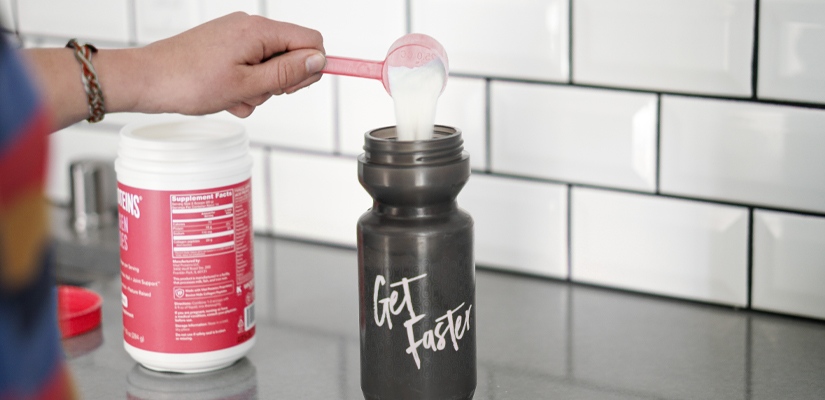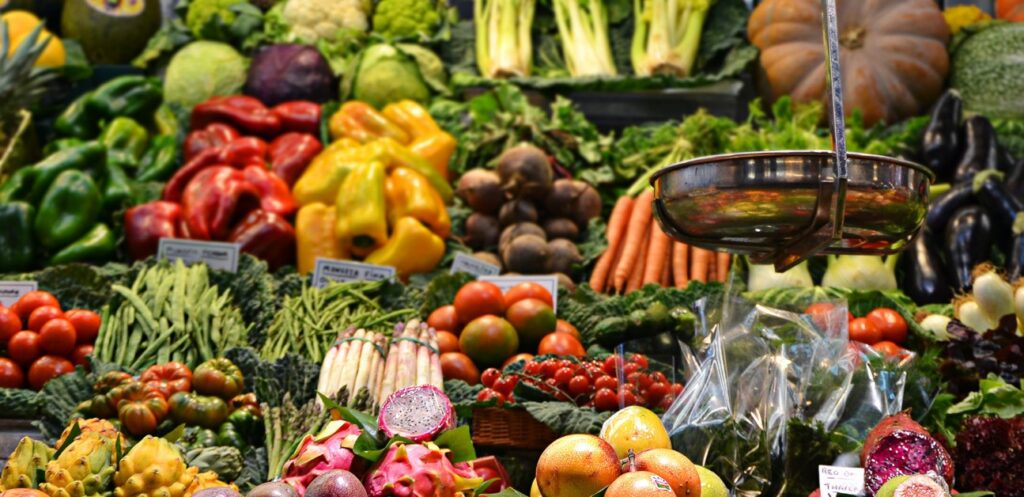The Benefits of Collagen for Endurance Athletes

As a cyclist, the right diet and supplementation can help take your training to a higher level. Collagen supplementation, when timed with a workout, can help improve your joint health and recovery from injury.
For more information on nutrition and recovery check out Ask A Cycling Coach Ep 248
What is Collagen?
Collagen is the body’s most abundant and structurally important protein. Amazingly, this elastic protein holds your body together by anchoring cells to one another. Anything that has elastic tissue, collagen is present. It is structurally vital for bones, cartilage, connective tissue, skin, and intestines.
Types of Collagen
Mostly comprised of three amino acids, there are several types of collagen. Type I is associated with the skin, while Type II is linked with joint health. Type III is used in bones, connective tissues, and intestines. Each type is not exclusive to those functions as they all do a bit of each.
Sources of Collagen
Most collagen supplements are bovine or marine sources. You can also get collagen supplements from chicken and eggs, and from genetically modified yeast and bacteria for a vegan option. Bovine collagen is mostly types I and III, while marine collagen is type I. Which type of collagen you use will depend on what you’re after. Many athletes combine whey protein with collagen supplements to round out their amino acid profile.
Why you Need it
With age, your ability to synthesize collagen reduces. Moreover, the lack of collagen can lead to wrinkled skin, slow wound healing, and joint pain. Coupled with the fact that the standard American diet sorely lacks collagen, supplementing collagen comes with many benefits.
Collagen can help endurance athletes in several ways. Perhaps the greatest way it can aid endurance athletes is through injury prevention and recovery. That means you can train more, or when you do suffer a joint injury, get back on track sooner. Aside from joint health, collagen also promotes gut health, deep sleep, and mitigates UV damage to the skin.
Ways to Get More
There are a few ways that you can ingest more collagen. Through diet or supplementation, you can ensure you have adequate amounts on board.
Diet
The first way is by adding it to your diet. Animal bones and cartilage are abundant sources so adding bone broth or eating meat on the bone to your diet will help. While not common in most diets, hooves, skin, and fish heads are good sources as well. Additionally, there are plant-based sources. Pumpkin, berries, and dark leafy greens all promote synthesis.
Supplementation
Most collagen supplements are derived from bovine or marine sources. There are a few things to look for when you are picking a supplement. The first thing is that it must be hydrolyzed or peptides because the amino acids are too large to cross the intestinal wall. Hydrolyzation is using water to make the amino acids smaller for absorption.
If you compete in events, you’ll want to find a brand that has been certified by the NSF International or Informed Sport. That way, you be sure that your supplement does not contain any banned substances.
How to Use Collagen
Using a supplement is pretty straightforward. Emerging research is showing that you can target collagen to a specific joint. To make this happen, you must time the dosage and the exercise the targeted joint.
Dosage
In one study, 10-15 grams of collagen was sufficient to see a significant reduction in activity-related joint pain. Synthesis is vitamin C dependant. So you’ll need at least 50 milligrams of it as well.
Timing
Timing your supplementation with exercise is key for targeting specific joints. Absorption ramps and peaks about one hour after ingestion. If your workout lasts longer than an hour, you would be safe to take it just before you begin.
To get it where it needs to go, you’ll need some joint movement. This is because connective tissues have relatively little blood flowing in them. By using the joint, you squeeze these sponge-like tissues, which allows for the collagen to deposit where it can be utilized. The exercise doesn’t have to be high-impact; you just need to move the joint.
Collagen can make you a faster cyclist through injury prevention and recovery. The timing of supplementation and exercise are key factors in making it work for you. For more information on supplements, check out, Ask a Cycling Coach 168.
For more cycling training knowledge, listen to Ask a Cycling Coach — the only podcast dedicated to making you a faster cyclist. New episodes are released weekly.
